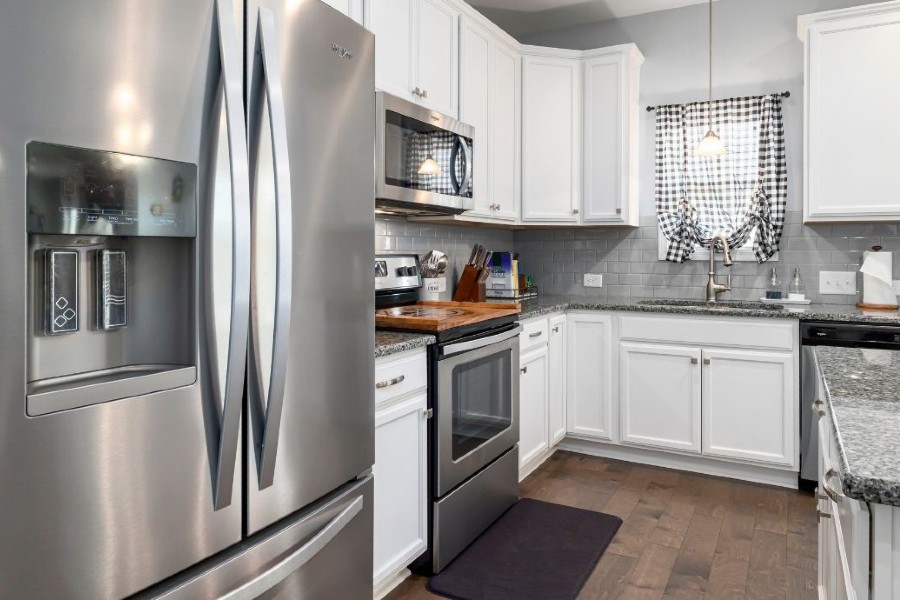
A clogged kitchen sink is something most homeowners encounter at some point.
It’s frustrating when water won’t drain properly, especially when you’re in the middle of cooking or cleaning. Fortunately, there are several simple methods you can try at home to clear the clog before calling in a professional.
Using tools like plungers and drain snakes can often help, but for tougher clogs, it’s sometimes best to rely on experts. As professionals from a Houston drain cleaning company would recommend, knowing when to call in help can prevent bigger problems down the road.
1. Use Boiling Water
One of the easiest and quickest methods to clear a clogged kitchen sink is to use boiling water. This is especially effective if the blockage is caused by grease or soap scum.
What to do:
- Bring a large pot of water to a boil.
- Carefully pour the boiling water directly down the drain in two to three stages.
- Wait a few minutes to see if the water starts draining.
If the sink remains clogged, this method might not be sufficient for more severe blockages, but it’s always a good first step to try.
2. Baking Soda and Vinegar
If boiling water doesn’t work, a natural remedy like baking soda and vinegar can often do the trick. This combination creates a fizzing reaction that can break down clogs.
What to do:
- Pour half a cup of baking soda down the drain.
- Follow it with a cup of white vinegar.
- Cover the drain with a stopper or cloth and let the mixture fizz for about 15 minutes.
- Flush the drain with hot water to clear out any remaining debris.
This method works well for clogs caused by food particles, grease, or minor blockages.
3. Plunger
A plunger isn’t just for toilets, it can also be a useful tool for unclogging your kitchen sink. If the clog is deeper in the pipes, a plunger can help dislodge it by creating pressure.
What to do:
- Fill the sink with enough water to cover the plunger’s rubber cup.
- Place the plunger over the drain and create a tight seal.
- Pump the plunger up and down several times, then quickly pull it off the drain.
If the water starts draining, you’ve likely cleared the clog. If not, it might be time to move on to another method.
4. Remove the P-Trap
The P-trap is the curved pipe beneath your sink that can often collect debris and cause blockages. Removing and cleaning it can help get rid of tough clogs.
What to do:
- Place a bucket under the P-trap to catch any water.
- Use a wrench to loosen the slip nuts on either side of the trap.
- Remove the trap and clean out any debris inside.
- Reattach the trap and run water to see if the clog is gone.
If this method doesn’t work, the blockage could be further down the pipe, and it may be time to consider professional help.
5. Plumber’s Snake
For stubborn clogs that are out of reach, a plumber’s snake (or drain snake) can be the tool you need. This long, flexible tool can reach deep into your pipes to clear out whatever’s causing the blockage.
What to do:
- Insert the snake into the drain and turn the handle to push it deeper into the pipe.
- Once you feel resistance, twist the snake to break up or hook the clog.
- Slowly pull the snake out and run hot water to ensure the clog is cleared.
If you don’t have a plumber’s snake, you can use a straightened wire hanger as a DIY alternative for less severe blockages.
When to Call a Professional
If you’ve tried all of these methods and your kitchen sink is still clogged, it might be time to call in a professional. Persistent clogs could be a sign of a more serious issue, such as a blockage deep in your plumbing system or a buildup in the main sewer line. A professional can use specialized tools like hydro jetting or camera inspections to locate and eliminate even the most stubborn clogs, ensuring your pipes are clear and working efficiently.
Preventing Future Clogs
While clearing a clogged sink is important, preventing future clogs can save you time and hassle down the road. Here are a few tips to keep your kitchen sink free from blockages:
- Avoid Pouring Grease Down the Drain: Grease can solidify in your pipes, causing blockages. Instead, collect grease in a container and dispose of it in the trash.
- Use a Drain Screen: Install a screen over your sink’s drain to catch food particles and debris before they can enter the pipes.
- Run Hot Water After Each Use: After using the sink, run hot water for a few seconds to help flush out any food particles and prevent buildup.
- Be Careful with What You Dispose: Avoid putting fibrous or starchy foods, like potato peels or coffee grounds, down the drain. These items can expand and cause blockages.
Conclusion
Unclogging a kitchen sink can often be done with a few simple tools and techniques. Whether it’s boiling water, a plunger, or a plumber’s snake, these DIY methods are a good place to start. However, if the clog is persistent or you’re dealing with frequent blockages, it’s best to call a reliable drain and sewer cleaning experts. Professional plumbers can help resolve the issue quickly and ensure your plumbing is in top condition. With the right preventive measures, you can keep your kitchen sink running smoothly and avoid future clogs.
Become a Harlem Insider!
By submitting this form, you are consenting to receive marketing emails from: . You can revoke your consent to receive emails at any time by using the SafeUnsubscribe® link, found at the bottom of every email. Emails are serviced by Constant Contact








